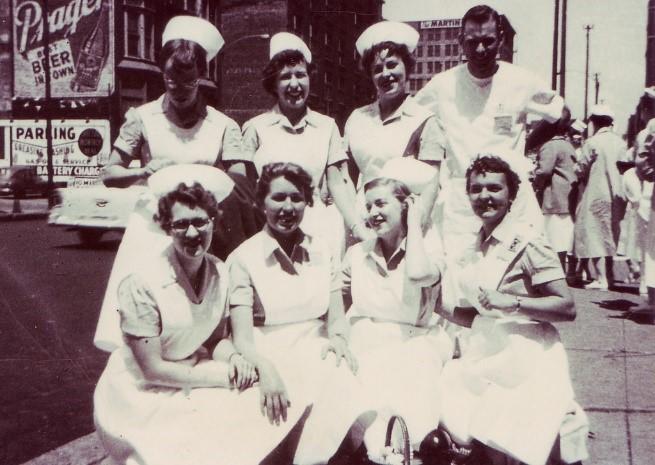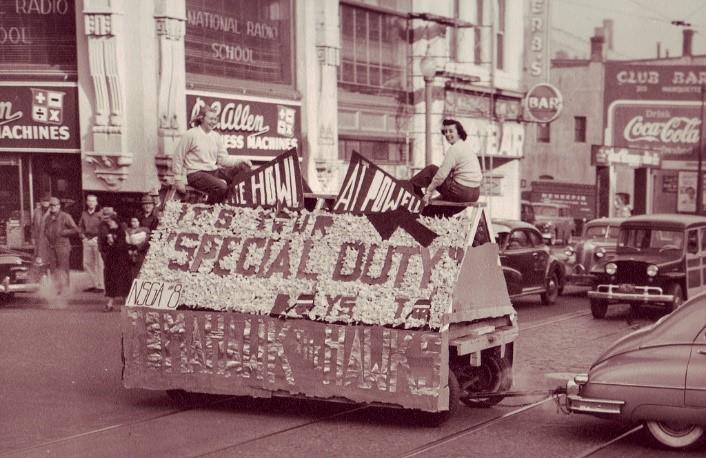
The University's Responsibility to Nursing Education
President W.C. Coffey remarked in 1943 that nursing proved its worth both on the war front and the home front throughout WWII. Nurses provided many necessary services to servicemen and to citizens. These women were an essential backbone of keeping the United States unified during an intense wartime. Nursing, therefore, must be regarded as a form of professional education just like medicine, dentistry, pharmacy, and engineering1.
The University of Minnesota must be responsive to improving its nursing institution since the "responsibility the university has to nursing education is a full recognition of its importance and place in contributing to the welfare of the people" - Coffey (pg. 3)1.
Expanding the Course of Study
Before WWII, the University of Minnesota's nursing degree program took five years to complete. This changed when Katharine J. Densford, president of the Minnesota Nursing Association and American Nursing Association, joined the nursing staff. As the school's director, Ms. Densford created a course of study in 1949 that could guarantee graduation in four years2. Students were also given more room for elective courses to explore their other interests and were allowed begin nursing classes during their first semester.
Shortening the length of the course was not the only monumental aspect to Ms. Denford's first years as director. Because of an increasing demand for male nurses to care for male, orthopedic, and psychiatric cases, it was decided that male nurses could enroll in the School of Nursing for the first time in university history beginning in the fall of 19493.
Although male nurses are less common, even today, this decision proved important to the future of the nursing profession. All nurses, regardless of gender or background, must work together to provide the best care to patients. "In Minnesota," according to Katharine Densford, "nurses function as a whole nursing unit rather than separate groups. With this spirit of cooperative effort, we find that there are no barriers and that solutions come to our nursing problems" (pg. 21)2.
A Former Student's First-Hand Account
Marylin Sime graduated from the University of Minnesota's nursing program in 1959. During this time hospital-training programs, like those in the late 1800s, were still implemented throughout the United States.
In an interview, Ms. Sime recalled her time in the program as unique for the time. The "curriculum was organized very differently with a focus on nursing, studying patient behaviors, and arriving at what was considered, at the time, a nursing diagnosis of the patient's needs and developing a nursing care plan around those concepts rather than around the medical conditions" (pg. 6)4.
Nursing at the University of Minnesota was taught in a way that put the patient first. Education focused on teaching patient-centered approaches instead of condition-centered approaches. In the long run, this is beneficial because patients feel in control of their own recovery.
When Marylin arrived at the University of Minnesota, Katharine Densford was the school's director of nursing who Ms. Sime remembers as "an excellent teacher" (pg. 11)4. This great compliment is due to that fact that Ms. Densford introduced students to a new way of professional thinking to improve patient care.
Under Ms. Densford curriculum was also reorganized throughout the 1960s to include a Master's Degree in Nursing and clinical specialization as opposed to strictly a functional degree. Efforts even succeeded in creating the School of Nursing as its own college in the 1970s.
Ms. Sime recalled that debate regarding nursing as its own college. It was decided post-WWII that nursing is a profession, however, now the question was is nursing a true science? After 3 proposals to the Board of Regents, a Ph.D. program for nursing was finally approved to settle this ongoing debate; nursing is a professional science4.
A Shortage of Nurses
In the 1960s and 1970s, there was a shortage of health care workers - especially nurses - in the Twin Cities area. Many job openings were available, however, potential applicants couldn't move to the cities due to family obligations. To deal with this, outreach nursing programs were created in Rochester, Duluth, and Saint Cloud4. This was the beginning of the unique partnership the School of Nursing has with these local colleges, especially Rochester, today.
"In my personal experience, once I got out of the diploma school and became an RN, I could be employed any place. I was guaranteed a job. It didn't matter where I went" - Marylin Sime (pg. 36)4. This is true even today, which is why nursing is so appealing to many young college students. There is a job guarantee as soon a nurse graduates in nearly every part of the world.



